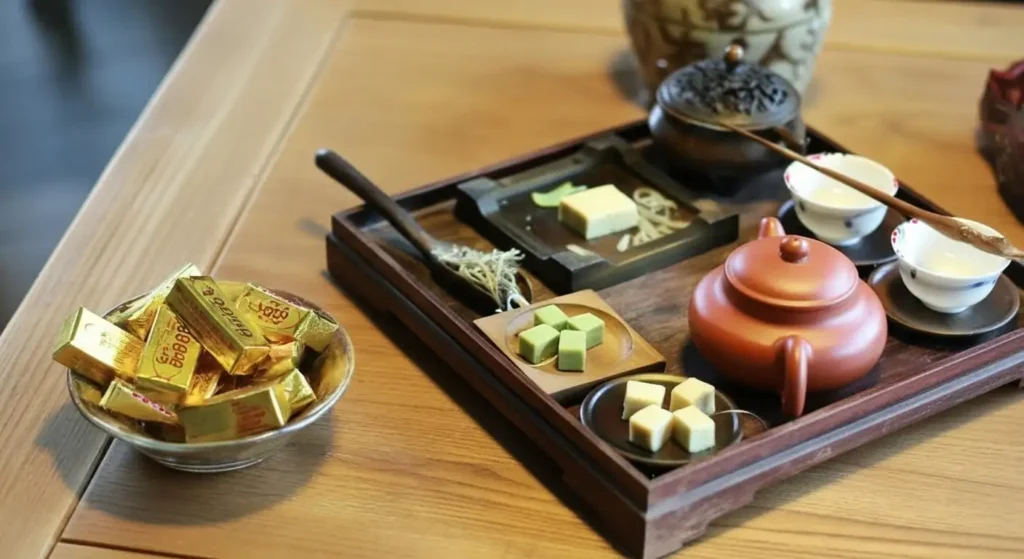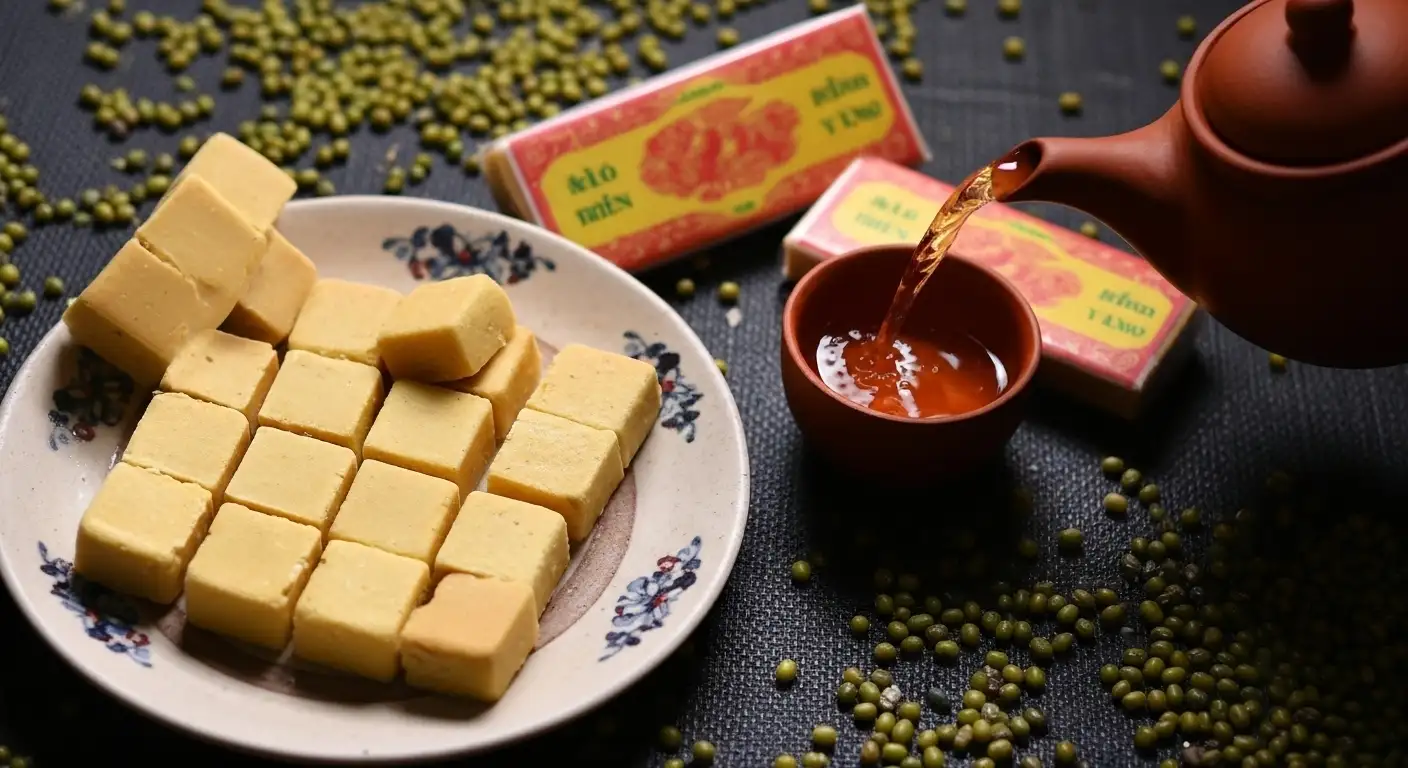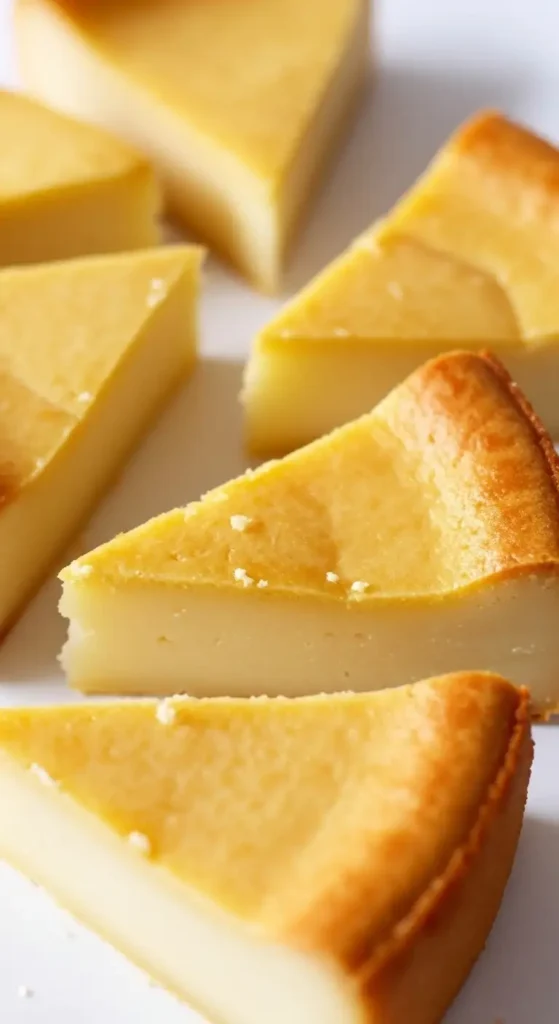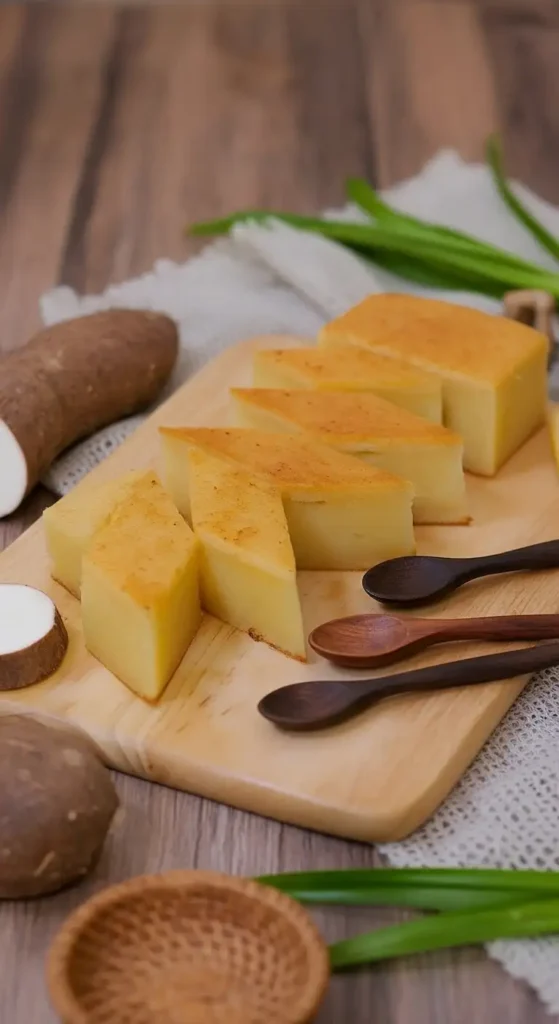Bánh Đậu Xanh (pronounced banh dau sanh) is one of Vietnam’s most celebrated traditional sweets. More than just a dessert, these compact, golden cubes of mung bean paste are a symbol of hospitality, often enjoyed during family gatherings and as a popular gift. Its unique texture—dry yet creamy, rich yet light—makes it a truly distinct confection.

The Basics of Bánh Đậu Xanh
What is it?
Bánh Đậu Xanh literally translates to “Mung Bean Cake.” It is a delicate, powdery cake made primarily from peeled mung beans, sugar, fat, and a natural aromatic oil.
Key Characteristics:
Texture: Its defining feature is the “melt-in-your-mouth” consistency. The cake is pressed into a firm block, but when placed on the tongue, it dissolves instantly into a creamy, smooth powder.
Ingredients: The core ingredients are mung beans (đậu xanh), sugar, and fat (traditionally pork fat/lard, but now often vegetable oil).
Aroma: A subtle, beautiful fragrance is added, typically from pomelo flower oil or vanilla, which elevates the simple sweet flavor of the mung bean.
Origin and Status:
The most famous and authentic variety originates from Hải Dương Province in Northern Vietnam. Bánh Đậu Xanh Hải Dương is a protected regional specialty, highly regarded throughout the country. It is said that Vietnam’s last emperor, Bảo Đại, was so impressed with the cake that he permitted the image of a Golden Dragon (a royal symbol) to be printed on the packaging, which remains a tradition today.
Types and Variations of Bánh Đậu Xanh
While the classic Hải Dương cube is the most recognizable form, the term Bánh Đậu Xanh can refer to different mung bean preparations across the country.
The Classic Cube (Bánh Đậu Xanh Hải Dương):
This is the original, dry-pressed cake. It is cut into small, bite-sized cubes, individually wrapped in moisture-wicking paper (often foil-lined greaseproof paper), and packed in small boxes decorated with the iconic Golden Dragon. Its texture is characterized by its high fat and sugar content, allowing it to disintegrate when eaten.
Baked Mung Bean Cake (Bánh Đậu Xanh Nướng – Southern Style):
In Southern Vietnam (particularly the Mekong Delta), Bánh Đậu Xanh sometimes refers to a baked cake that incorporates other ingredients like flour, condensed milk, eggs, and coconut milk. This version is similar to a sweet loaf or fudge-like pastry. It has a moister, softer, and more chewable texture than the Northern cube, often with a golden-brown top from baking.
Filling for Other Cakes:
Mung bean paste is a fundamental component in Vietnamese confectionery. The sweet, cooked, and mashed mung bean filling (also đậu xanh) is used inside:
Bánh Chưng (Square Sticky Rice Cake for Tết).
Bánh Trung Thu (Mooncakes).
Chè (Sweet Soups).
Bánh Ít (Little Cakes).

The Traditional Way to Eat Bánh Đậu Xanh
The key to properly enjoying Bánh Đậu Xanh lies in the beverage pairing, which perfectly balances the cake’s richness.
The Classic Pairing: Hot Green Tea (Trà Xanh)
This is the essential and most traditional way to consume the cake. The sweetness and richness of the mung bean cake are intentionally strong. The accompanying cup of hot, slightly bitter, or astringent green tea acts as the perfect counterpoint.
Method: Take a bite of the cake and let it melt in your mouth, savoring its creamy richness. Immediately follow it with a small sip of hot green tea. The tea’s bitterness and warmth cleanse the palate, cutting through the sweetness and preparing your mouth for the next bite. This creates a refined and balanced sensory experience.
With Black Coffee (Cà Phê Đen)
For a modern or morning treat, some people enjoy it with strong, black Vietnamese coffee. The robust bitterness of the coffee provides an even stronger contrast to the cake’s sweetness, creating a complex and energizing flavor combination.
As a Gift (Quà Tặng)
The cakes are designed for easy storage and gifting. They are often purchased in bulk during holidays, especially Tết (Lunar New Year), and given to family and friends as a representation of good wishes and appreciation. They are a staple snack to offer guests visiting one’s home.
Regional Differences: The North's Specialty vs. The South's Adaptation
Bánh Đậu Xanh exhibits a clear geographical specialization, particularly between the North and South.
| Region | Primary Bánh Đậu Xanh Style | Key Differences |
|---|---|---|
| Northern Vietnam | The Dry, Melt-Away Cube (Bánh Đậu Xanh Hải Dương) | This is the original. It is famous for its dry, crumbly, melt-in-your-mouth texture. The flavor is simpler, relying heavily on the pure taste of mung bean, sugar, traditional fat (lard or oil), and the subtle floral aroma of pomelo oil. It is most valued as a formal accompaniment to tea. |
| Southern Vietnam | Baked Mung Bean Cake (Bánh Đậu Xanh Nướng) | The South, with its rich history of coconut and sweet flavors, often features a baked or wet version of the cake. This cake is moister, softer, and sometimes incorporates more local ingredients like coconut milk and more flour or starch, resulting in a chewable, fudge-like consistency rather than a powdery melt. |
| Central Vietnam | Found, but not a specialty. | While mung bean paste is heavily used in Central Vietnamese desserts (like fillings for their sophisticated Bánh and Chè in Hue), the Cube Cake itself is not a regional specialty. The region tends to import the famous Hải Dương variety or uses the mung bean primarily as a component within other unique local confections. |




